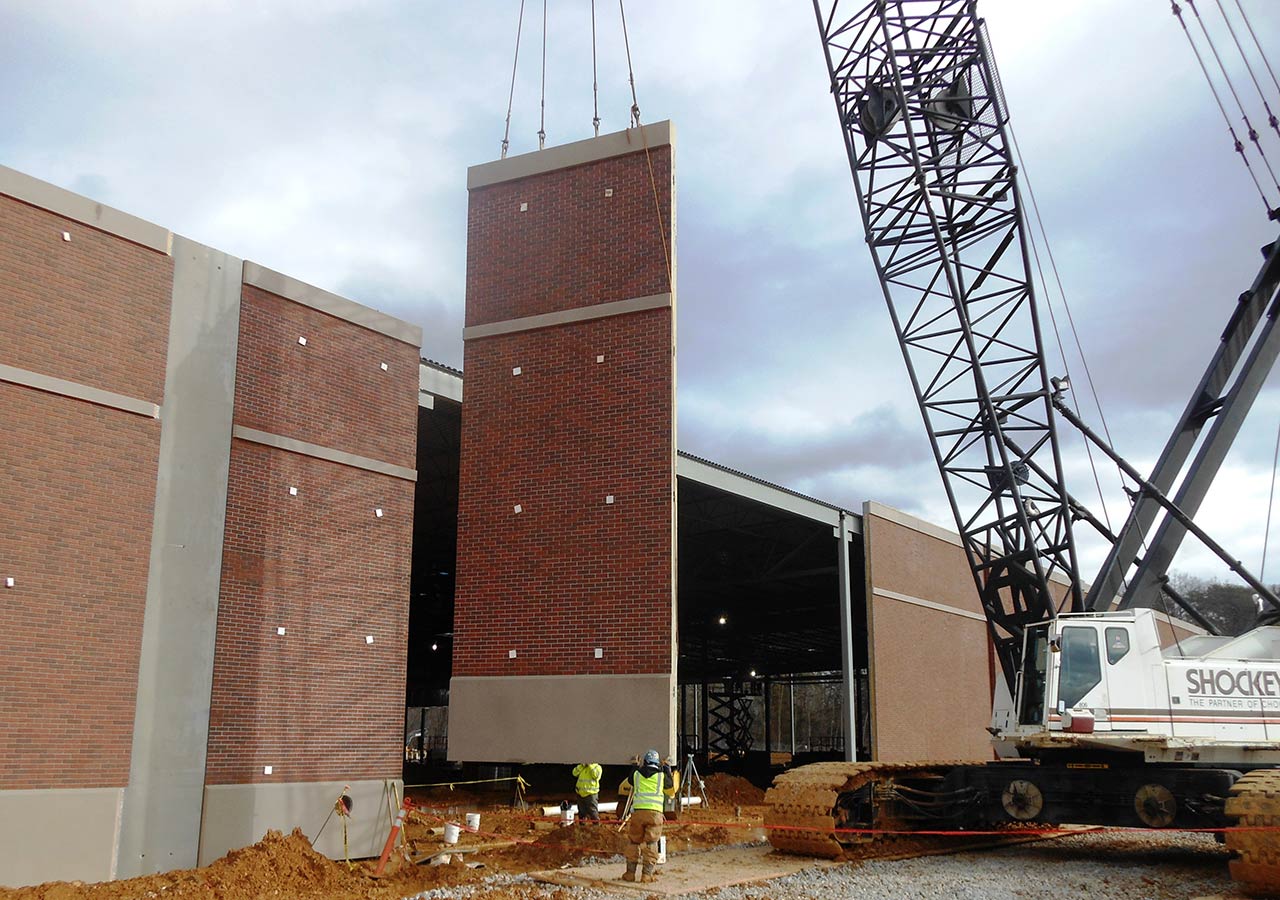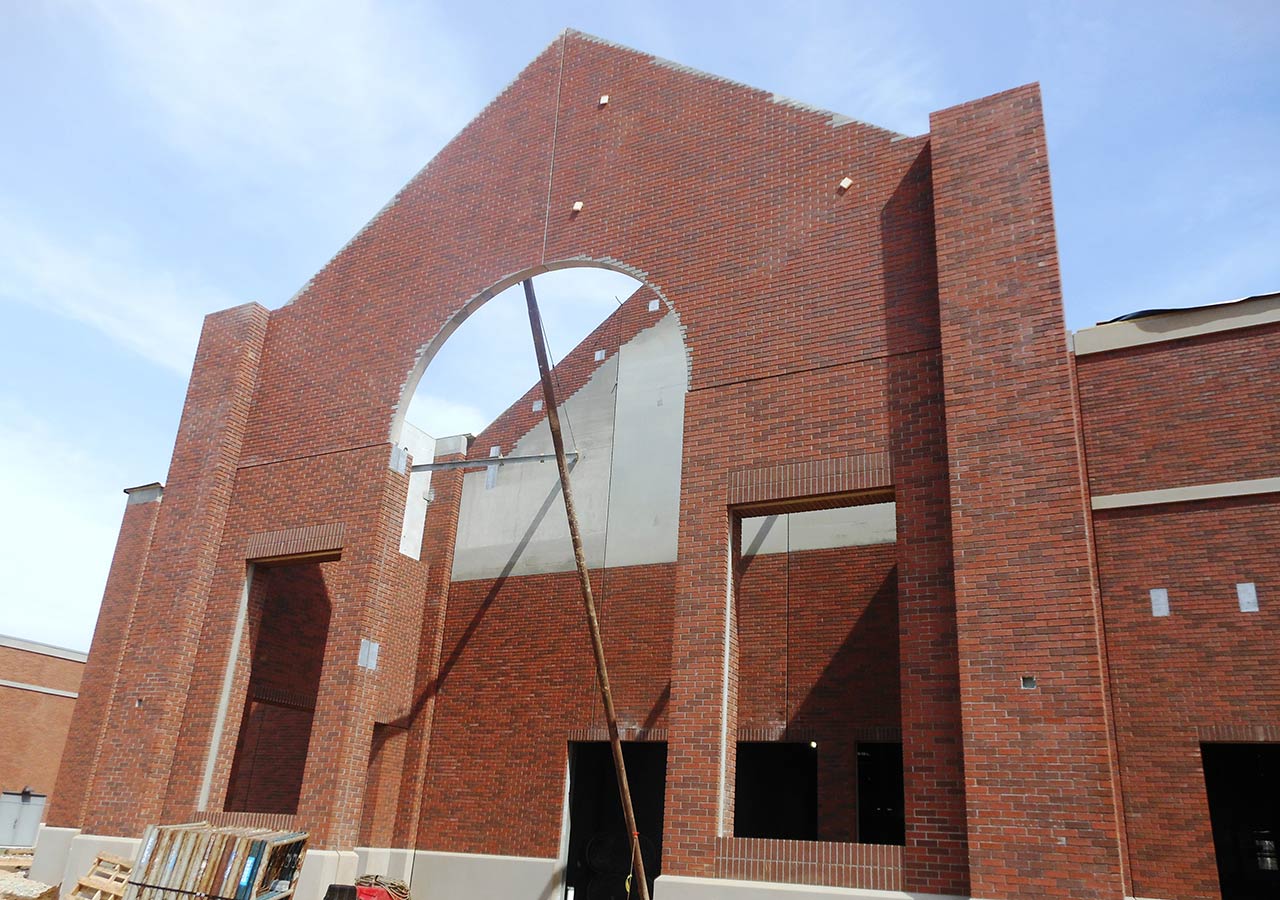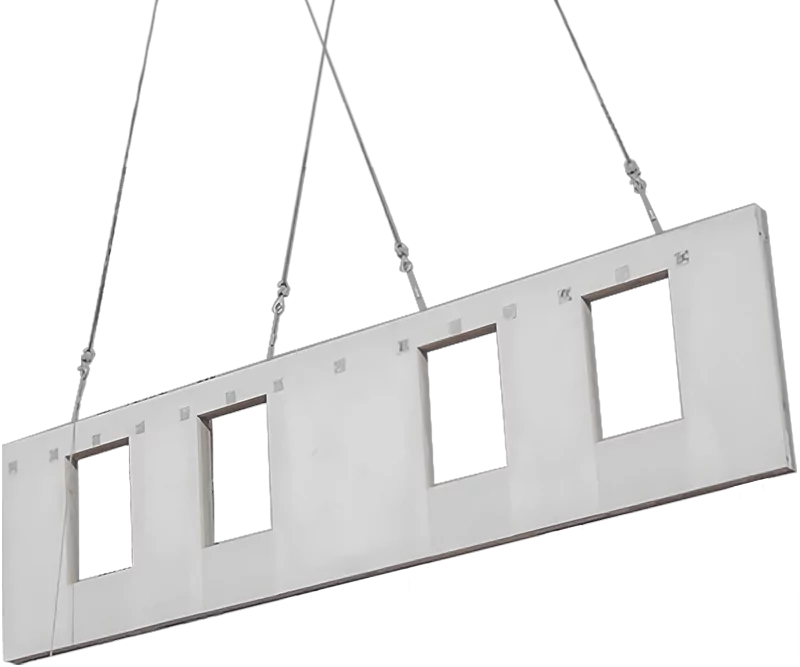The Fort Belvoir Commissary Facility has the distinction of being the busiest—and the most profitable–commissary in the Defense Commissary Agency’s system. So when its capacity could no longer match the growing demand of base personnel, it was time to build a second facility. The Shockey Precast Group was subcontracted by general contractor Hoar Construction to provide architectural precast wall panels for the new commissary facility, as well as architectural precast arches and components for the separate entrance and exit vestibules. Since the architectural wall panels would be braced to a steel frame being erected just ahead of the precast, coordination and innovation were required to ensure a successful and smooth project flow.
Tekla Innovation as Strategy for Collaboration Success
The Shockey Precast Group’s scope of work for the two-phase, 60,000 SF project consisted of a 44,000 SF commissary facility and a 16,000 SF entrance/exit vestibule. Shockey produced 50,000 SF of insulated precast walls for the project; approximately 148 pieces of architectural precast with thin-brick façade for the new commissary facility, and 115 arched pieces of architectural precast with thin-brick façade for the vestibule. Shockey utilized Tekla Structures 3D modeling to guide precast production and establish precast erection sequence. The model provided a 3D rendering that allowed Shockey Precast’s Engineering team to review the complex panels, perform a virtual “walk-through” for panelization, and coordinate with the steel subcontractor’s reference model. Although the project was not without its obstacles, the use of Tekla Structures 3D modeling facilitated collaboration between Shockey Precast’s Engineering team and Field Services, as well as with other trades and subcontractors. It also created a project flow that was remarkably smooth and successful for the complexity of the project.
Precast Bracing and Stabilization

Stability of the structure was a primary concern during erection of the commissary facility, as the precast wall panels were braced to the steel frame structure. Because completion of the steel frame was delayed and stability of the structure could not be guaranteed, Shockey Precast would not begin precast erection until a third-party engineer had provided a bracing plan that would ensure the safety and stability of the structure. Visualizing the vestibule in the Tekla Structures model helped the Shockey Precast team recognize potential issues before they occurred in the field, and enabled Engineering and Field Coordination to create a workable plan that solved the challenge of how to brace the half-arches and maintain stability during precast erection.
From a design and production perspective, the use of the Tekla Structures 3D model helped engineering provide an accurate brick count to production for order. A 3D rendering was also included on the shop tickets, which enhanced product visualization. Engineering received a 3D model from the steel erector, and was able to integrate this model with the Tekla Structures model of the precast to review the overall structure and identify discrepancies and potential problem areas.

The Tekla Structures 3D model was also helpful for developing the erection sequence, and allowed Shockey Precast erection crews to see potential erection challenges before they were encountered in the field. From the erection perspective, the biggest challenge offered by this complex project was its location on a military base. Complying with base regulations and protocol for working onsite required extensive coordination as all personnel working onsite were required to go through inspection daily prior to being allowed on base. The trucks delivering precast were also required to go through inspection, and normal permit load regulations did not apply on a military base. Ensuring that Shockey trucks and personnel were in compliance with base protocol and processes demanded careful coordination by Shockey Precast’s Field Services team.
Through ongoing communication, the use of Tekla Structures 3D modeling, and successful collaboration with general contractor Hoar Construction, architect The Jenkins Group, Inc., and engineer Defense Commissary Agency, Shockey met the numerous logistical challenges associated with this complex project and provided Ft. Belvoir with a striking new commissary facility to serve its personnel.
Owner: Defense Commissary Agency
General Contractor: Hoar Construction
Engineer: Defense Commissary Agency
Architect: The Jenkins Group, Inc.
Precaster: The Shockey Precast Group
